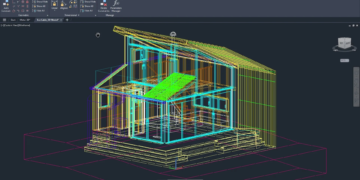As technology continues to advance, the integration of smart appliances into our homes is becoming increasingly commonplace. Among these innovations, smart LED light bulbs are transforming the way we think about and use lighting. They have emerged as a cornerstone in the home lighting revolution, setting the stage for a future in which convenience, efficiency, and customization are paramount.
Introduction to Smart LED Light Bulbs
Smart LED light bulbs are the latest evolution in home lighting solutions. These light bulbs do not simply illuminate a room; they bring a range of features that change the way homeowners interact with the lighting in their homes. With an emphasis on connectivity and user-control, smart LED lighting systems provide a level of interactivity previously unimaginable.
Energy Efficiency
One of the prime benefits of smart LED light bulbs is their energy efficiency. LED technology itself is known for consuming less power than traditional incandescent bulbs. When combined with smart technology, these bulbs become even more efficient. They can be programmed to adjust the intensity of light throughout the day or to turn off automatically when rooms are not in use, further conserving energy and reducing electricity bills.
Enhanced Control and Customization
Control and customization are major selling points for smart LED bulbs. Homeowners can adjust the brightness, set schedules, choose from millions of colours, and even create lighting scenes suitable for various activities—all from their smartphones or voice activation devices. This level of control enhances the user experience by allowing lighting to be tailored to individual preferences and situations.
Integration into the Smart Home Ecosystem
Smart LED light bulbs can seamlessly integrate into the wider smart home ecosystem. They can work in conjunction with other smart devices, such as thermostats, sensors, and security systems. This connectivity not only streamlines home management but also adds an extra layer of security, with lights that can simulate presence when the home is empty or that can be triggered by motion detectors.
Accessibility and Ease of Use
Despite the sophistication of the technology, smart LED light bulbs are designed with user accessibility in mind. The setup process is typically straightforward, and once installed, navigating the accompanying apps or smart home platforms is intuitive. Even those who are not tech-savvy can enjoy the benefits of smart lighting with minimal effort.
Lifespan and Cost-Effectiveness
One might assume that with all these added features, smart LED light bulbs would have a shorter lifespan. In fact, the opposite is true. LEDs are known for their longevity and can last up to 25,000 hours or more. While smart LED bulbs are generally more expensive upfront than traditional bulbs, they prove cost-effective in the long run due to their extended lifespan and energy-saving capabilities.
What to Look for in Smart LED Light Bulbs
When considering smart LED light bulbs, potential buyers should evaluate compatibility with existing smart home systems, ease of installation, and the availability of features that are important to them, such as colour temperature adjustment or integration with voice assistants. In addition, it’s important to opt for bulbs that offer secure connectivity, since they will be connected to the home’s Wi-Fi network.
The Role of Smart Lighting in the Environment
In addition to the personal benefits, smart LED light bulbs contribute positively to environmental sustainability. By reducing electricity consumption and having a longer lifespan, they minimise waste and lower the carbon footprint of a household. This makes them an attractive option for eco-conscious consumers looking to make responsible choices in their home automation investments.
Choosing the Right Bulbs
With a myriad of options available on the market, choosing the right smart LED bulbs can be daunting. Consumers should look into the varied attributes, such as lumens, colour ranges, compatibility with dimmers, and quality of the mobile application. Research and comparison of products are crucial in making an informed decision that will align with the user’s lifestyle and preferences.
The Continuing Evolution of Home Lighting
As smart technology gets more advanced, the potential for smart LED light bulbs grows. We can expect to see innovations in areas like integration with augmented reality for home design, improved security features, and even more intelligent automation that can anticipate user needs. The landscape of home lighting is on the brink of transformation, and smart LEDs are leading the charge.
Acceptance and Adoption
Despite the benefits, the adoption rate of smart LED light bulbs can be influenced by the reluctance to transition from traditional incandescent or halogen bulbs, often due to a lack of understanding of the potential return on investment. Education on the advantages and long-term savings offered by smart LED bulbs can help overcome this barrier to adoption.
Conclusion
Smart LED light bulbs represent the future of home lighting. Their multitude of features addresses the needs of the modern homeowner, who values not only practicality and cost-effectiveness but also an enhanced living experience. The innovation surrounding smart LEDs is a testament to the progressive nature of technology in the home sphere, and their potential impact on lifestyle and environmental conservation is substantial.
As our homes become smarter and more connected, it is clear that smart LED light bulbs will play a significant role in shaping our daily lives, offering a glimpse into an enlightened future where the light adapts to us, rather than the other way around.
In conclusion, the revolution in home lighting spearheaded by smart LED light bulbs is just beginning. With ongoing advancements and a growing emphasis on intelligent homes, these bulbs will not just illuminate spaces but will transform them, making our homes more comfortable, efficient, and in tune with our individual needs.













